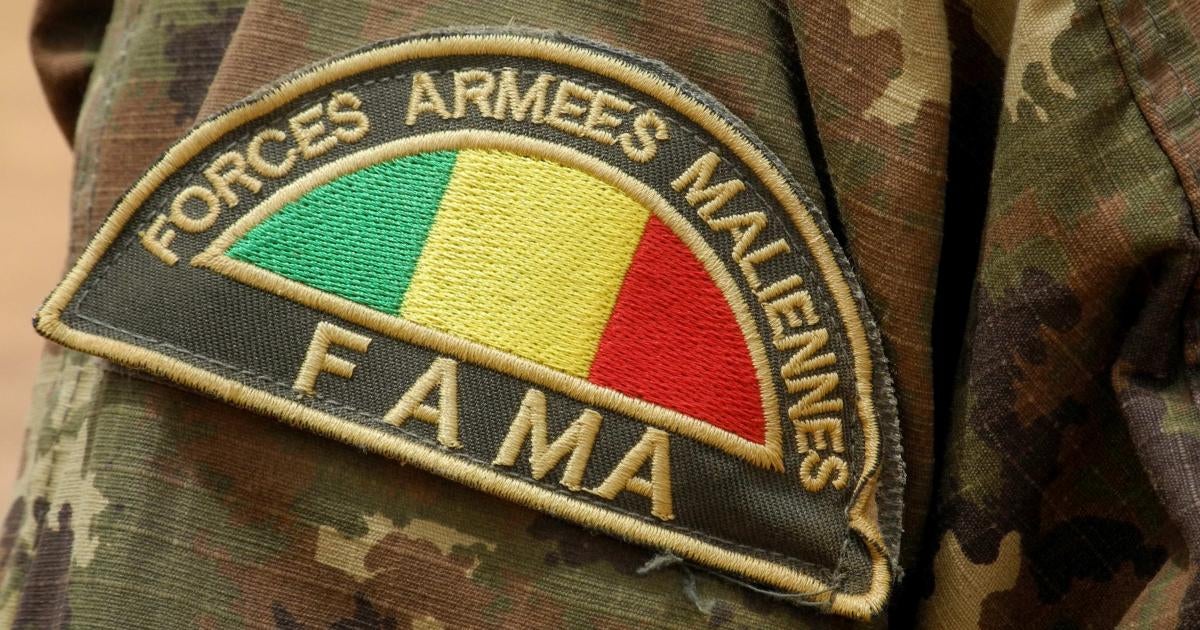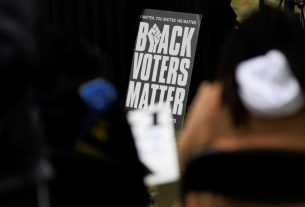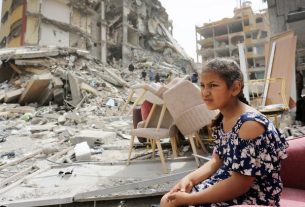- Islamist armed groups and Malian armed forces have killed and otherwise abused numerous civilians in central and northern Mali since April 2023.
- Violence has intensified across Mali following the May 2021 coup. The targeted killing of civilians by Islamist armed groups and the Malian army are war crimes.
- Malian authorities, with international support, should urgently conduct credible and impartial investigations into the alleged abuses, and hold those responsible to account.
(Nairobi, November 1, 2023) – Malian armed forces and Islamist armed groups have killed and otherwise abused numerous civilians in central and northern Mali since April 2023, Human Rights Watch said today. Mali’s transitional military authorities, with the support of the National Human Rights Commission and international human rights experts, should urgently conduct credible and impartial investigations into the alleged abuses, and hold those responsible to account.
Islamist fighters of the Al-Qaeda-linked Group for the Support of Islam and Muslims (Jama’at Nusrat al-Islam wa al-Muslimeen, JNIM) have killed more than 160 civilians, including at least 24 children, since the beginning of April. Malian armed forces have killed up to 40 civilians, including at least 16 children, during counterinsurgency operations. The Malian government has failed to take adequate measures to protect civilians in conflict affected areas.
“The targeted killing of civilians by Islamist armed groups and the Malian army are war crimes that should be thoroughly and impartially investigated,” said Ilaria Allegrozzi, senior Sahel researcher at Human Rights Watch. “The Malian authorities should seek independent regional and international human rights experts to assist Malian judicial authorities so those responsible for these grave crimes can be held to account.”
In August and September, Human Rights Watch interviewed 40 people by telephone with knowledge of attacks by the Malian army and Islamist armed groups. They included 33 witnesses to abuses and a half dozen members of Malian civil society groups and international organizations. On October 9, Human Rights Watch sent letters to Mali’s justice and defense ministers detailing its findings about alleged abuses and related questions. They have not replied.
The JNIM and the Islamic State in the Greater Sahara (ISGS) have committed numerous serious abuses in several Mali regions, including widespread killings, rapes, and looting of villages. The recent abuses come as the United Nations peacekeeping mission to Mali, the Multidimensional Integrated Stabilization Mission in Mali, prepares to leave the country by December 31.
On September 7, Islamist fighters believed to be affiliated with the JNIM attacked a passenger boat traveling on the Niger River near the village of Abakoira in the Timbuktu region. The attackers fired at least three rockets at the boat, killing 49 people. Many victims drowned or burned to death when the boat caught fire. “I jumped into the water,” said one survivor. “Many others jumped, too. Some were screaming inside the boat because of the fire. It was total terror. Many died because they couldn’t swim.”
The boat attack is linked to the JNIM’s siege of the town of Timbuktu since mid-August, limiting freedom of movement on main roads and waterways along the Niger River. The JNIM has attacked towns and villages in both Mali and Burkina Faso, cutting the civilian population off from food, basic necessities, and aid, to gain control.
Human Rights Watch also documented Malian armed forces’ abuses during three counterinsurgency operations against Islamist armed groups largely linked to Al-Qaeda – in Gadougou, Trabakaoro and Sambani villages, in Nara and Timbuktu regions. During the operation in Sambani on August 6, authorities arrested 16 men and a boy, whose bodies were later found outside the village. Witnesses reported the involvement of foreign, “white” armed men, seemingly members of the Russia-backed Wagner Group, which has supported the current government since December 2021.
Both sides have targeted villagers for allegedly collaborating with the other side. “The army … kills people without fearing any consequences,” said a man from Mopti region. “The jihadists also kill, kidnap, and burn without fear of being held accountable. And we, the civilians, we are caught between a rock and a hard place in our own country.”
In July, Human Rights Watch reported on abuses by members of the Malian army and associated foreign fighters, apparently from the Wagner Group, including summary executions and enforced disappearances of several dozen civilians during counterinsurgency operations in central Mali.
Violence has intensified across Mali since 2022, amid the political instability following the May 2021 coup. The Armed Conflict Location & Event Data Project, a data collection, analysis, and crisis mapping project, found violence against civilians in Mali between January and August had increased by 38 percent compared with 2022, with the JNIM, the Malian armed forces and Wagner Group, and the ISGS the main attackers.
In addition, security in northern Mali has sharply deteriorated since late August, following a resumption of hostilities between the Tuareg rebels of the Coordination of Azawad Movements – an alliance of armed ethnic Tuareg groups – and the Malian army. Tuareg rebels have sought the independence of northern Mali since the mid-2000s, but signed a peace deal with the Malian government in 2015.
All parties to Mali’s armed conflict are bound by international humanitarian law, notably Common Article 3 of the Geneva Conventions of 1949 and customary laws of war. Individuals who commit serious violations of the laws of war, including summary executions and torture, should be prosecuted for war crimes. Mali is a party to the Rome Statute of the International Criminal Court, which has opened an investigation into alleged war crimes committed in Mali since 2012.
“Governments concerned with the spiraling violence and abuses in Mali should both press and assist the Malian authorities to carry out thorough and impartial investigations into the serious abuses committed by all sides,” Allegrozzi said. “The Malian judicial authorities should work with the National Human Rights Commission, the African Commission on Human and Peoples’ Rights, and the UN independent expert on human rights in Mali, to investigate these abuses.”
Armed Conflict in Mali
Since 2012, successive Malian governments have fought at least two Islamist armed groups, the Al-Qaeda-linked Group for the Support of Islam and Muslims (Jama’at Nusrat al-Islam wa al-Muslimeen, JNIM) and the Islamic State in the Greater Sahara (ISGS). The hostilities have resulted in the deaths of thousands of people and forcibly displaced over 375,000 more. The departure of the UN peacekeeping mission, at the request of Malian authorities, raises grave concerns about the protection of civilians and the monitoring of abuses committed by all sides.
Abuses by Islamist Armed Groups
Bodio, Mopti Region, August 6, 2023
On August 6, hundreds of JNIM fighters riding motorbikes and vehicles and armed with Kalashnikov-style assault rifles led an attack on Bodio, killing 15 men, including an 18-year-old and three older men, several witnesses said. They said the fighters wore military uniforms with body armor and spoke Fulfulde and Dogon. All those killed, witnesses said, appeared to have been shot in the head. During the attack, the Islamist fighters also burned at least 10 homes.
Bodio residents said the attack came after they broke a deal with JNIM militants under pressure from Dan Na Ambassagou militia, an umbrella group of local self-defense groups. Dan Na Ambassagou began in 2016 “to protect the Dogon country,” and had at times cooperated with Malian security forces. A Bodio resident said:
Our village used to be protected by Dan Na Ambassagou until 2020. In 2021, with the increasing power of the jihadists, the militia retreated and to save their lives, villagers were forced to make a deal with the jihadists. The deal provided that villagers cut all relations with the militia and the Malian army. … In turn, the jihadists would let them … conduct their normal activities. But the deal began to weaken since a joint patrol of Malian soldiers, Wagner [fighters] and Dan Na Ambassagou militiamen passed by the village in June. On this occasion, the militiamen forced villagers to record a video addressed to the jihadists and announcing the end of the deal.
Residents said since the deal was breached, they started noticing an increased presence of Islamist fighters and informed the village chief. He went to Bandiagara, about 14 kilometers from Bodio, to inform the gendarmes, the military, and the governor, to seek help. “But despite his appeal, there was no response,” said a resident. “The military and the governor only came [to Bodio] when [the attack] was over.”
Witnesses said that, in addition to the 15 men killed, two militiamen were killed in the fighting. They said the Islamist fighters were searching out the men of the village, whom they accused of being members of Dan Na Ambassagou. Most of the men in the village fled when the attack started.
A 54-year-old woman said:
Three [fighters] came to my house and asked me in Dogon [language]: “Where are the men? We are going to kill them.” I begged them to spare me and my children. … They killed two of my cousins in the street. … I heard the shooting and then saw their bodies in a pool of blood.
A 45-year-old woman said the fighters killed her uncle: “I saw them catching him only a few meters from my house. Then I heard two gunshots and I saw my uncle falling to the ground.”
A man who helped bury the bodies said:
The attack ended about 8 p.m. Immediately after, all those who had hidden in the nearby bush, including me, came back to help bury the bodies. We gathered all the bodies together because they were scattered, some in their homes, others in the streets, others at the entry of the village. We found that all of them had been shot in the head.
Human Rights Watch obtained two lists compiled by witnesses and Bodio residents with the identities of all 15 civilians killed, ages 18 to 81, and of the two militiamen who died stepping on a mine.
Residents said the Islamist fighters burned at least 10 homes. They said almost all villagers left Bodio after the attack to go to Bandiagara, where they sought shelter in a school. Human Rights Watch reviewed six photographs taken by the displaced at the school showing the dire conditions, lacking adequate food and other necessities.
“After the attack, we abandoned Bodio, leaving behind us a village in ruins,” said the 54-year-old woman. “We are living in a school. We need everything, we have no assistance.”
Since October, those displaced from Bodio have been living in tents supplied by an international organization in Bandiagara.
Boat Attack, Gao Region, September 7
On September 7, Islamist fighters believed to be affiliated with the JNIM attacked a passenger boat traveling on the Niger River near Abakoira village, Gao region. On the same day, Islamist fighters attacked an army camp in Bamba, Gao region. In a September 7 statement, the Ministry of Territorial Administration and Decentralization accused the JNIM of carrying out both attacks and gave a provisional death toll of 49 civilians and 15 soldiers. The statement , however, did not specify how many people died in each assault, and witnesses said many more people died in the boat attack. On September 8, the JNIM claimed responsibility for the Bamba attack.
Human Rights Watch interviewed three survivors of the boat attack and one man who helped rescue the injured and recover bodies from the water. They all described people screaming, running, and jumping into the water as the boat was hit by at least three rockets and caught fire. Media reported that the boat operator, Comanav, confirmed the vessel “was targeted by at least three rockets aimed at its engines.”
A 47-year-old trader, who was in the boat, said:
The attack started with a first rocket, which made the boat tremble. I heard a loud “boom.” Then, there was a second one. I was in a berth with four women and two children. They all died as the first rocket hit the boat. I jumped into the water. … As I swam toward the riverside, I saw people drowning – women and children. … I heard people screaming and gunfire. … I saw the boat catching fire, … I reached the riverside and rushed to Gourma Rharous [town] to seek help. … I went to talk to the mayor, who sent young rescuers.
Witnesses said a few Malian soldiers were also on the boat to ensure the security of the passengers and when the boat was hit by the first rocket, they exchanged gunfire with the assailants. A man who was injured in the attack said:
When the first rocket hit, the boat made a strange shake. … Then there was a second rocket and the soldiers responded by shooting. Panic invaded the boat, followed by screams of children and women. I had no choice but to jump into the water … but the current was too powerful, so I started swallowing water and I lost consciousness. I woke up at the Gourma Rharous hospital.
Witness accounts indicate at least 120 people died in the attack. The 47-year-old survivor who returned to the site of the attack with the rescuers said:
We first recovered 67 bodies; then by 5 p.m. we had recovered an additional 87 bodies, for a total of 154 bodies. Some people drowned, others were shot while swimming or when they were still on the boat, others died in the fire.
A 34-year-old rescuer from Gourma Rharous said:
I responded to the mayor’s call to help the people who had been attacked in the boat. By the time I arrived, … some [rescuers] had already recovered around 20 bodies. … I collected 10 bodies: 4 women, 2 children, and 4 young men. … They [the bodies] were scattered, some had been transported far by the water current. … Our first count was 120 dead, but later some people discovered more bodies in other places.
In a September 11 statement, the United Nations Children’s Fund (UNICEF) said 24 children died in the boat attack and 9 others were taken to the hospital for treatment.
Abuses by the Malian Armed Forces and Associated Foreign Fighters
Trabakoro, Nara Region, April 22
On April 22, scores of Malian soldiers carried out an operation in Trabakoro village, searching for JNIM fighters. According to three witnesses, the soldiers killed 18 people: 14 children and 4 women.
Witnesses and residents said the JNIM operates in and around Trabakoro, but no Islamist fighters were in the village at the time of the military operation. “Trabakaoro has sheltered more jihadists than the entire Nara region,” said a Trabakoro resident. “Soldiers suffered multiple attacks by [fighters] from here. This is the reason why, failing to find the jihadists, the soldiers killed women and children whom they took to be women and children of jihadists.”
Witnesses said that between 10 and 11 a.m., two military helicopters opened fire on the village, followed by the arrival of soldiers. For about three hours, soldiers went door-to-door, shooting at people inside their houses or outside as they ran for cover.
An 86-year-old woman who survived the attack by lying down in her house, where 13 of her family members had sought shelter, said:
Three soldiers came to my door – they wore camouflage uniforms and had Kalashnikovs. One stepped in and opened fire on us. … There was a first round of bullets, then calm. Then a second soldier came into the house to check if anyone was still alive. … Some children were screaming in pain, so the soldier fired a few more bullets and walked out. … I thought that everyone had died. I thought about killing myself. I thought it was not worth living when all my loved ones had gone.
She said her 3 daughters were injured, while the 10 other relatives, including 6 children, were killed. She also said the soldiers killed 8 other children in the village.
A 45-year-old man, who helped rescue the woman and her daughters and helped bury the bodies of those killed in Trabakoro, corroborated this information. He said:
We took the older woman out of her house, alongside her three wounded daughters. … Then we took out the bodies of those killed inside the woman’s house and carried them to a place close to one of the exits of the village. … As we toured the village, we noticed more bodies of children scattered around. … We don’t know whether these children were shot from the helicopters or killed by soldiers on the ground, but their bodies were riddled by bullets. … We carried them to the same place for the burial.
Another man who rushed to Trabakoro after the attack said he saw the bodies of all 18 people killed, including his 12-year-old son. “The bodies had been aligned and covered with sheets,” he said. “I unveiled the first one, then the second. Both were children. Then, I unveiled the third body, and I recognized my child. His body was covered in blood with bullet wounds everywhere.”
Human Rights Watch reviewed two lists of 18 victims, ages 6 months to 47 years, compiled by witnesses.
Residents said the heavy shooting from the helicopters led to a bush fire that spread throughout the village, destroying at least 10 homes. The 86-year-old woman who survived the attack said: “They left behind fire, smoke and death.”
Gadougou, Nara region, July 27, 2023
On July 27, Malian soldiers killed four men and a child in Gadougou, an ethnic-Fulani settlement in Nara region, where the JNIM is known to operate.
A witness said that around 4 p.m., four Malian military vehicles and six motorbikes, with dozens of Malian soldiers wearing helmets and armed with Kalashnikov-style rifles, passed a group of three Fulani herders. Soldiers ordered the men to raise their hands, but they ran away out of fear. The soldiers caught two of them and summarily executed them. “They made them sit down,” said the 22-year-old survivor, who watched the executions from a hiding place. “A soldier first put a bullet in my friend’s eye and my friend fell on the ground. Then he put his rifle in my other friend’s ear and fired.”
Three other herders, including a 17-year-old boy, heard the gunshots and rushed to the scene, but soldiers killed them too, the survivor said. “Three soldiers stopped them, made them sit down … and then opened fire on them,” he said. “All three were shot in the head. One did not die, so the same soldiers shot him in the side, and he died.”
Three men who helped bury the bodies said they were buried three days later. One said:
All the corpses were lying next to each other. We found that one had been shot in the eye and another in the ear, and three others in the head. We dug two holes. In one of them we put two bodies and in other the remaining three.
The survivor and the three other witnesses provided the identities of the five people killed, ages 17 to 31, and said they thought they were targeted based on their ethnicity. “The military shot us because we are Fulani,” one said. “That makes us a target. Soldiers think we are jihadists. … These days a Fulani in the Nara region does not need to be armed to be targeted by the military.”
Human Rights Watch has documented serious abuses by the Malian armed forces against Fulani, including killings, arbitrary arrest and detention, and enforced disappearances. Islamist armed groups have focused their recruitment efforts on Fulani communities by exploiting grievances with the government and other ethnic groups.
Sambani, Timbuktu Region, August 6, 2023
Scores of Malian soldiers accompanied by several “white” fighters in military uniforms carried out an operation in Sambani village, where the JNIM is known to operate, on August 6. During the operation, the soldiers and the allied fighters searched homes, and arrested 16 men and 1 boy. The following day, villagers found the bodies of all 17.
Human Rights Watch interviewed three people who witnessed the military operation and one man who found the bodies near Sambani and helped bury them in a mass grave.
Witnesses said that on August 5, a large convoy of at least 100 military vehicles, including pickup trucks and armored vehicles, stopped at the outskirts of Sambani at 4 p.m. A woman, about 40, said:
The village chief went to greet the soldiers and asked them to leave since our village does not shelter any jihadists. … The soldiers replied that they had not come to stay and that they were just waiting to repair one of their vehicles that had broken down. They assured our chief that they would not do any harm to the population and asked him to tell his people. The chief then came back and told us not to worry. … But we were surprised to see that not only did the soldiers spend the night there, but also that the following morning they stormed our village, arresting and terrorizing people.
Witnesses said that during the operation, the soldiers and the foreign fighters went door-to-door and arrested 16 men, ages 20 to 87, and one 15-year-old boy. Witnesses gave identifying details of those arrested and said the soldiers and the foreign fighters arrested those whom they assumed were members of Islamist armed groups. “But the criteria for arrest appeared vague to me,” a 57-year-old man said. “They arrested those who didn’t have their identity card, and those who looked suspicious to them – for example, those with short pants and a beard.”
A 38-year-old man said:
I saw white soldiers and Malian soldiers. … [B]ut … the Malian soldiers conducted most of the arrests. … Two Malian soldiers asked me to show them my identity card. I did. They saw a motorbike beside me and asked if it was mine. I said yes …. They said they would take it. I let them do that because I was afraid of being arrested. … They arrested people in the village. They took my neighbor [because] he didn’t have his identity card. … All those arrested were later found dead.
On August 6, between 7 and 8 p.m., a group of Sambani residents found the bodies of the 17 arrested during the military raid about one kilometer north of Sambani. A 48-year-old man who visited the site said all the victims appeared to have been shot in the head and tortured, including three with their ears cut off. “The bodies were grouped all together. They all had bullet wounds to their heads and appeared to have been tortured before being shot,” he said. “I saw injuries on their shoulders and backs. … One had his arms broken and … three had their ears cut off. We dug a big grave and put everyone there.”



